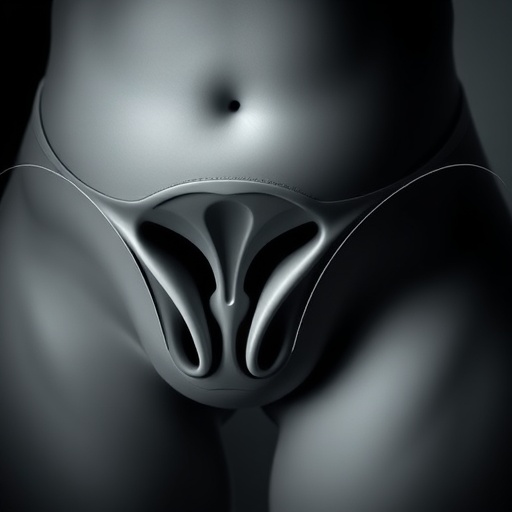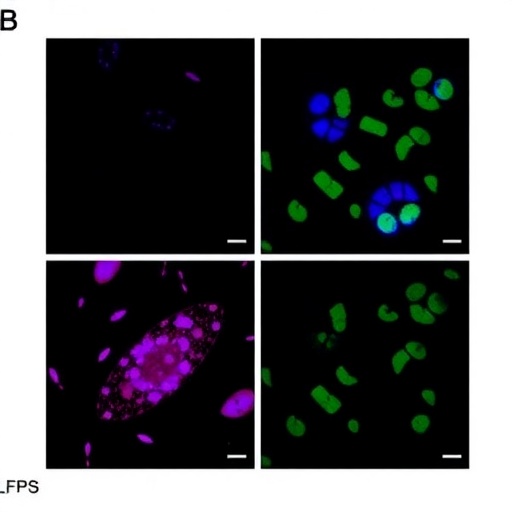
Recent advancements in gynecological surgeries have led to significant improvements in reproductive outcomes for women with congenital uterine anomalies. A particularly intriguing surgical intervention is hysteroscopic metroplasty, particularly aimed at women diagnosed with a T-shaped uterus. This configuration, which is typically associated with the presence of intrauterine conditions such as Asherman’s syndrome or the impact of diethylstilbestrol (DES) exposure, presents unique challenges for reproductive success. A recent study published in Reproductive Sciences, spearheaded by researchers including Taşkın, Dilbaz, and Demir, unveils the promising effects of hysteroscopic metroplasty on reproductive performance and obstetric outcomes for these women, offering hope and direction for future interventions.
The study surveyed a cohort of reproductive-age women who previously underwent hysteroscopic metroplasty for restoring normal uterine cavity architecture. The primary goal was to assess not only the immediate operational outcomes but to delve deeper into the long-term effects on fertility rates and overall obstetric results. The authors articulate that hysteroscopic metroplasty aims to reshape the uterine cavity, giving it a more typical configuration, thereby potentially enhancing the likelihood of successful pregnancies and healthier deliveries.
In the context of surgical techniques, hysteroscopic metroplasty stands out due to its minimally invasive nature. Unlike traditional open surgical approaches, this technique leverages the advantages of endoscopic guidance, allowing surgeons to visualize the internal cavity with remarkable precision. This ultimately facilitates targeted resection of fibrotic tissue while minimizing trauma to surrounding structures. The compression of the cavity in T-shaped uteri poses significant hurdles to embryo implantation and growth; thus, reconstructing the cavity shape is anticipated to yield favorable outcomes.
A detailed statistical analysis was conducted on key metrics such as pregnancy rates, live birth rates, and the incidence of obstetric complications among patients who underwent the procedure. The findings revealed a notable increase in pregnancy rates post-surgery, significantly surpassing the rates reported prior to the intervention. Live birth outcomes presented a similarly positive picture, underscoring the procedure’s efficacy in reversing previously adverse reproductive forecasts.
Another critical aspect examined in the study pertains to obstetric outcomes following hysteroscopic metroplasty. The risks of miscarriage, ectopic pregnancies, and preterm deliveries were closely monitored. Patients displayed an impressive reduction in these complications, which had traditionally been associated with T-shaped uterine morphology. This Transformation in the trajectory of obstetric journeys indicates that restoration of normal uterine shape can have profound implications on the pregnancy experience.
The investigation did not shy away from addressing potential complications associated with hysteroscopic metroplasty itself. The authors detail some intraoperative risks typical of procedures involving endoscopic techniques, including uterine perforation and fluid overload incidents. However, they emphasize that with proficient surgical execution and detailed preoperative planning, the risks are considerably mitigated. The conclusion that safety can be maximized while enhancing fertility potential is an enticing prospect for reproductive health.
Patient selection played an instrumental role in the success rates observed. The study underscores the importance of thorough evaluation methodologies prior to surgery, delineating which patients are ideal candidates for metroplasty. Such meticulous pre-surgical assessments ensure that only those who stand to benefit the most from this intervention are included in surgical programs, optimizing overall outcomes.
Notably, emotional wellbeing and psychological readiness leading up to surgery were also addressed in the research. Acknowledging the toll that unsuccessful pregnancies can take on mental health, the authors advocate for counseling services as a complementary resource to surgical intervention. Preparing patients for the journey through surgery, recovery, and potential pregnancy is as crucial as the physical procedure itself.
The authors also outline the implications of their findings for practicing clinicians. Drawing on evidence-based guidelines, the results aid in constructing treatment algorithms that incorporate hysteroscopic metroplasty as a viable option for women troubled by T-shaped uterus anomalies. Medical practitioners can deliver more informed discussions with patients regarding reproductive options post-surgery, aligning expectations with the promising outcomes introduced by this study.
Collating data from diverse geographical regions and healthcare settings adds a layer of robustness to the findings. The diverse patient demographic increases the generalizability of the results, making a compelling case that hysteroscopic metroplasty might be a transformative procedure for all women experiencing similar challenges globally. Research of this nature establishes essential groundwork for future international collaborations towards better reproductive health for women everywhere.
Despite the encouraging nature of the findings, the authors implore the need for further investigation. Longitudinal studies following patients years post-metroplasty could yield insights into the durability of surgical benefits. This will allow clinicians to fine-tune protocols and better assess the long-term impacts on both maternal health and child development.
In conclusion, the study by Taşkın et al. shines a bright light on the potential of hysteroscopic metroplasty as an effective intervention for women with T-shaped uteri. The restoration of a functional uterine cavity not only enhances reproductive outcomes but also improves overall obstetric experiences, thereby reaffirming the role of innovative surgical techniques in shaping the future of women’s reproductive health. With promising results pointing toward improved fertility and reduced obstetric complications post-surgery, we may witness a growing trend of employing this technique, ultimately transforming the pathways to successful pregnancies for numerous women.
By bridging surgical innovation with patient-centered care, the medical community can embrace a future where issues stemming from congenital uterine anomalies are managed with efficacy and compassion. The journey does not end with the findings alone; ongoing education, research, and advocacy are critical to elevate awareness and access to state-of-the-art reproductive interventions.
Subject of Research: Hysteroscopic metroplasty and its impact on reproductive performance and obstetric outcomes in women with T-shaped uteri.
Article Title: Reproductive Performance and Obstetric Outcomes after Hysteroscopic Metroplasty for T Shaped Uterus
Article References:
Taşkın, E.A., Dilbaz, K., Demir, D. et al. Reproductive Performance and Obstetric Outcomes after Hysteroscopic Metroplasty for T Shaped Uterus.
Reprod. Sci. (2025). https://doi.org/10.1007/s43032-025-01951-2
Image Credits: AI Generated
DOI: 10.1007/s43032-025-01951-2
Keywords: Hysteroscopic metroplasty, T-shaped uterus, reproductive outcomes, obstetric outcomes, gynecological surgery, fertility, endoscopic surgery.
Tags: Asherman’s syndrome treatmentcongenital uterine anomaliesdiethylstilbestrol exposure effectshysteroscopic metroplastylong-term fertility ratesminimally invasive gynecological surgeryobstetric outcomes after surgeryreproductive health interventionsreproductive outcomes in womensurgical advancements in gynecologyT-shaped uterus surgeryuterine cavity restoration techniques




